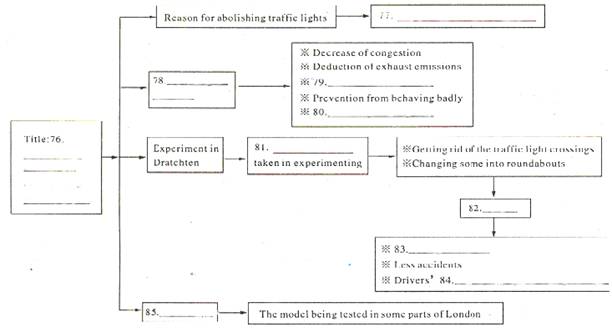题目内容
HANS Christian Andersen put Denmark on the map of the world literature with his stories The Emperor's New Clothes, The Little Mermaid (小美人鱼) and The Ugly Duckling.Now Copenhagen, the country's capital, has become the center of the world political map, with 190 world leaders attending the climate talks there, not to mention thousands of reporters.
Just how much do you know about the Scandinavian country?
Denmark is famous for its design culture.At the heart of “Danish Design” is the idea that, as poet and designer Piet Hein puts it: “There is one art, not more, nor less, [and that is] to do all things with artlessness (朴实)”.
Danish design places equal emphasis on practicality and quality.From Lego toys to furniture, Danish products are known for their clean lines, simplicity and functionality.“Remove material where it's not needed.Keep things simple and functional and make them carefully,” explained Hans J.Wegner, the first Danish designer to achieve worldwide fame: “The aim is not to create a work of art, but to produce a good chair.”
“The Danes have done a better job than most in promoting arts in Europe, considering their country's size and population, in the fields of architecture, sculpture and design,” writes Helena Smith, reporter with British newspaper the Guardian.
The simplicity of Danish design may extend to the quality of life there.Some even claim that the Danes have the highest quality of life of any nation in the world.
Kate Vial, a 55-year-old American who has lived and worked in Denmark for more than 30 years, explaining why she chooses to live in Denmark rather than the US, told Germany's biggest news weekly Der Spiegel: “I just chose a simpler life style, one where I could ride my bike all over and where I don't have to make a great living to survive.”
style, one where I could ride my bike all over and where I don't have to make a great living to survive.”
【小题1】What’s the writer’s purpose of mentioning Denmark’s literature?
| A.To show the readers that Denmark is best known for its stories. |
| B.To arouse readers’ interest in Denmark. |
| C.To tell the readers that this passage is related to literature. |
| D.To show why Denmark can attract so many political leaders. |
| A.Design culture | B.Making chairs |
| C.Writing poems | D.Climate prediction |
 s true according to the passage?
s true according to the passage?| A.Danish design pays more attention to arts than its function. |
| B.Danish products don’t need much material. |
| C.Danish people like to keep simple life. |
D.Compared with other countries in Europe, Denmark does lit tle in promoting arts. tle in promoting arts. |
 e is _____________.
e is _____________.| A.Creative | B.Complicated | C.Impractical | D.Simple |
| A.Danes conquer the world with simple designs. |
| B.Denmark—a new political center. |
| C.Life in Denmark. |
| D.Designer’s idea of Denmark. |
【小题1】B
【小题2】A
【小题3】C
【小题4】D
【小题5】A
解析

